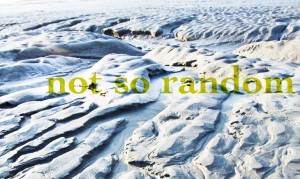
Posted by Miles Traer, Stanford University
The types of branching patterns formed by flowing water were thought to be totally mathematically random, but now scientists say they’ve uncovered a pattern—and in doing so challenge 50 years of research on landscape evolution.
Two researchers at Stanford University developed powerful mathematical relationships that captured not just the geometry of hillside channels but the geometry of the underlying landscape as well. The work might shine light on not just Earth-bound channels but also those on Mars and even in the human circulatory system.
Eitan Shelef, who began the work as a PhD student and is now a postdoctoral scholar at Los Alamos National Laboratory, says that in these equations, the researchers found a simple metric that distinguishes natural channel networks from those formed randomly within a computer, and in doing so, they firmly rejected the mathematically random hypothesis posed in the 1960s.
3D Signatures
In rejecting this decades-old hypothesis, Shelef and George Hilley, an associate professor of geological and environmental sciences, can now extract invaluable three-dimensional data from two-dimensional images.
“The way in which branched networks were measured in the past relied only on the two-dimensional map patterns of the channels in the networks,” says Hilley, a leading researcher on landscape evolution.
Using high-resolution images captured with laser altimetry, the pair analyzed not only the channels but the ridgelines as well.
By incorporating information about the ridgelines separating the channels, Shelef and Hilley related channel network geometry to the two-dimensional signature left by three-dimensional erosion. Because different erosional processes leave different erosional signatures, which in turn affect channel patterns, Shelef and Hilley’s approach allows Earth scientists to infer the processes that erode the landscape simply by analyzing the overlying channel network.
On Earth and On Mars
Shelef expanded on this, pointing out that his mathematical tools can help decipher the processes that shape channel networks in areas in which scientists have good imagery but limited elevation data, such as channel networks now buried underground, or channel networks on Mars or Saturn’s largest moon, Titan.
For example, images from NASA’s Mars Reconnaissance Orbiter showed branched channel networks etched into the red planet’s surface. Images beamed back from the Huygens spacecraft as it landed on Titan also showed channels likely formed from flowing liquid methane. Shelef’s research could help scientists better understand the processes acting on Titan today and the processes that carved out channel networks on Mars millions, if not billions, of years ago.
“Channel networks are one of the most common and ubiquitous geometric forms found on the surface of this and some other planets,” Hilley says.
The findings were recently published in Geophysical Research Letters.
Source: Stanford University








